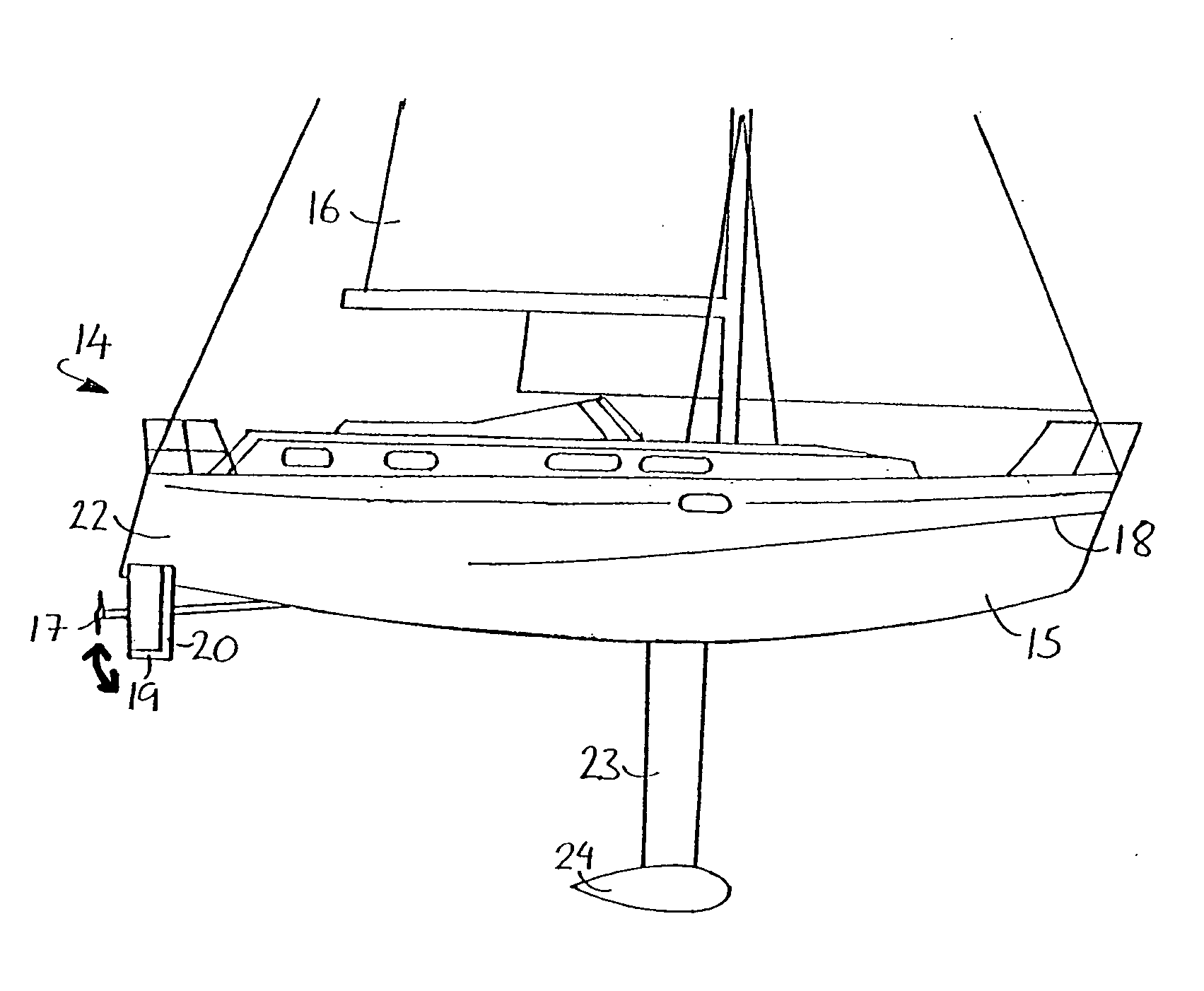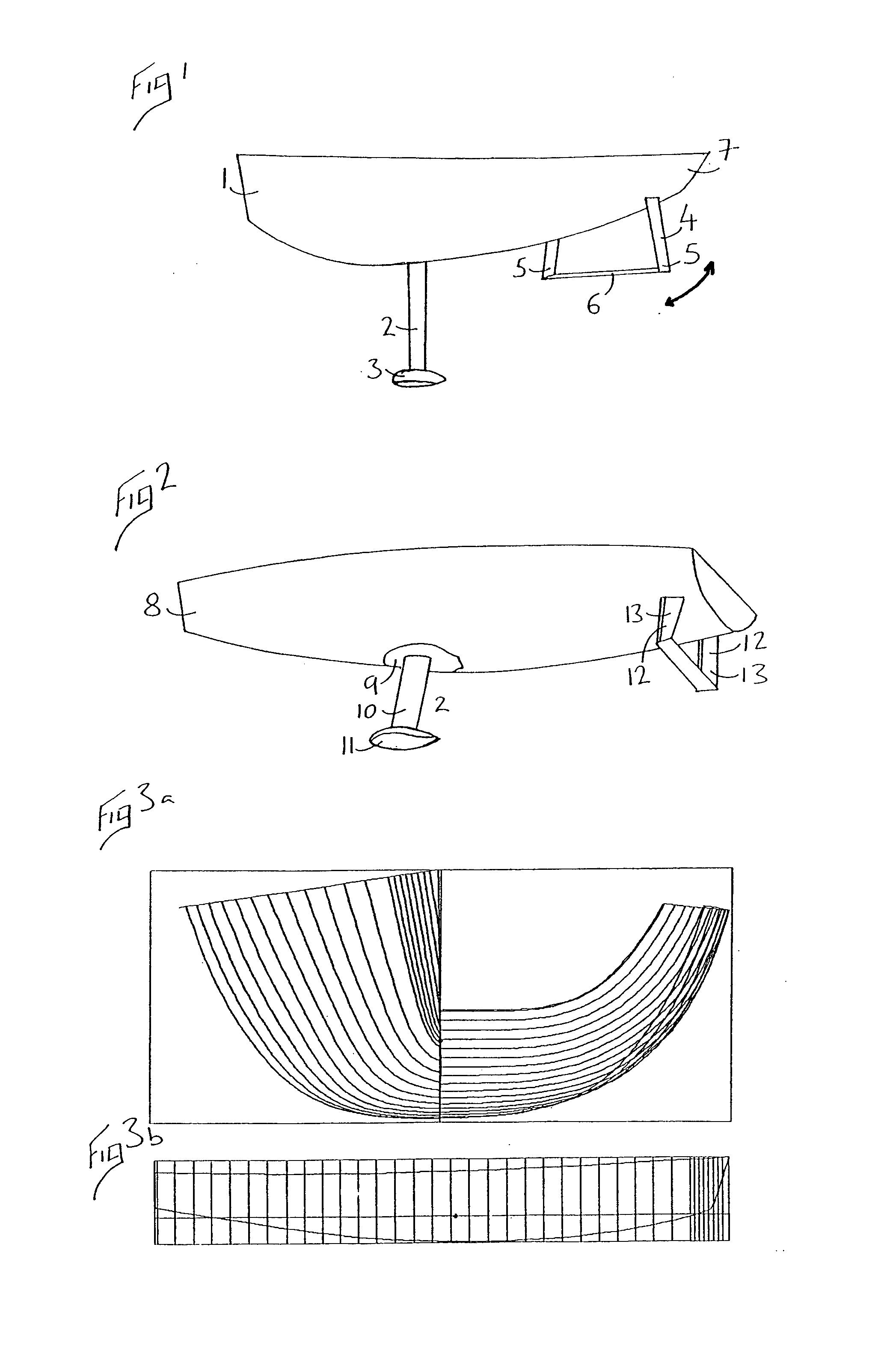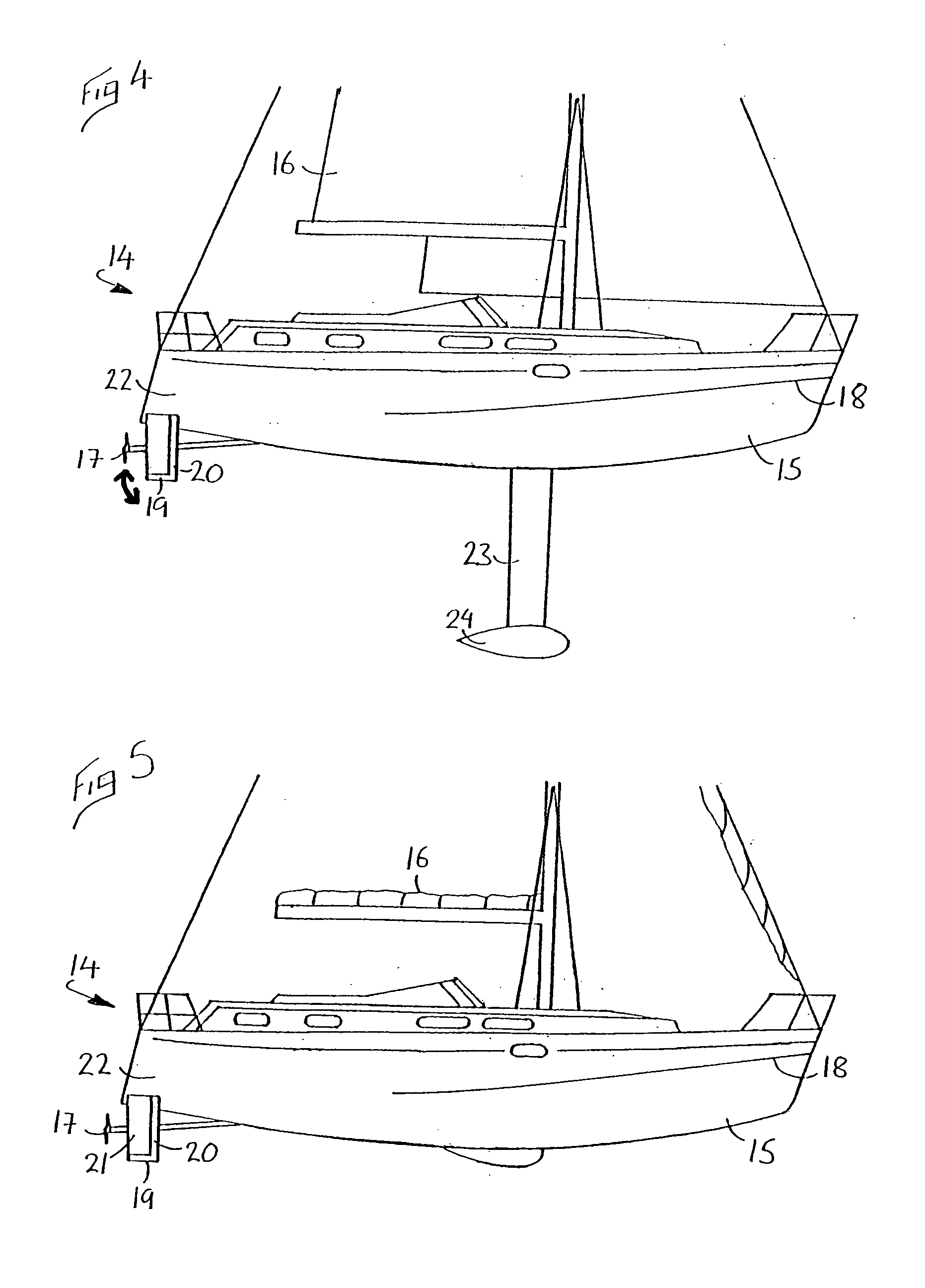Wind driven sailing craft
a technology for sailing boats and wind turbines, which is applied in the direction of marine propulsion, special-purpose vessels, vessel construction, etc., can solve the problems of preventing the aft of the craft from sinking lower into the water, creating drag that is detrimental to the performance of the craft, and reducing the displacement. , the effect of reducing drag
- Summary
- Abstract
- Description
- Claims
- Application Information
AI Technical Summary
Benefits of technology
Problems solved by technology
Method used
Image
Examples
Embodiment Construction
[0036]FIGS. 1 shows a displacement boat hull 1 which is shaped for sailing and is approximately 13 meters in length. FIGS. 3a and 3b show the cross-sectional contours of the hull 1. The hull 1 has a broad beam to provide sufficient righting moment to support the sails and provide an adequate lever arm for internal water ballast. In other respects the hull 1 is a shaped for high-speed sailing (approximately 10 knots). As shown in FIG. 1 the hull 1 is provided with a drop keel 2 with a ballast bulb 3, and a hydrofoil element 4. The hydrofoil element 4 comprises two struts 5 and an interconnecting horizontal wing 6. The wing 6 is substantially rectangular in shape with the shorter sides thereof disposed substantially parallel to the direction of the hull 1. The hydrofoil element is mounted adjacent to the aft 7 of the hull 1.
[0037]In FIG. 2 displacement boat hull 8 is identical to the hull 1 shown in FIG. 1, except for recess 9 provided on the lower surface. Recess 9 is dimensioned to ...
PUM
 Login to View More
Login to View More Abstract
Description
Claims
Application Information
 Login to View More
Login to View More - R&D
- Intellectual Property
- Life Sciences
- Materials
- Tech Scout
- Unparalleled Data Quality
- Higher Quality Content
- 60% Fewer Hallucinations
Browse by: Latest US Patents, China's latest patents, Technical Efficacy Thesaurus, Application Domain, Technology Topic, Popular Technical Reports.
© 2025 PatSnap. All rights reserved.Legal|Privacy policy|Modern Slavery Act Transparency Statement|Sitemap|About US| Contact US: help@patsnap.com



